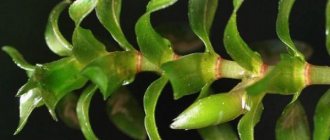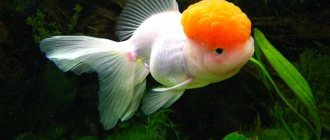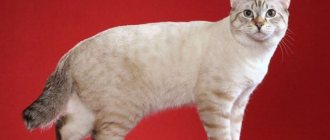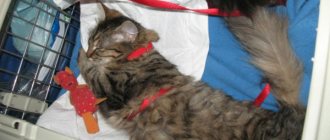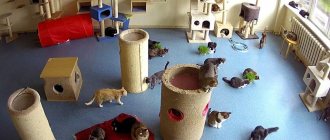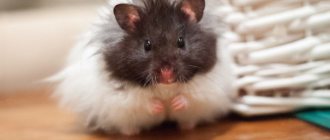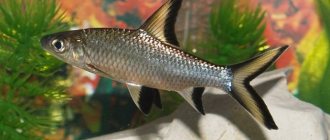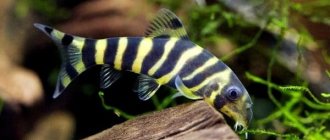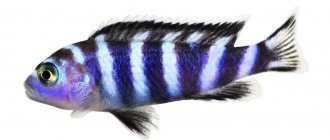The parrot family has many species. All these birds get along well with humans. Grays love attention and are intelligent. They are not picky eaters and do not cause much trouble when kept in an ordinary apartment or house.
Previously, they were considered sacred due to their beautiful plumage, melodious chirping and ability to speak. Already at the beginning of our era they were known in all corners of the globe. The Gray Parrot or Gray Parrot is a popular species, quite large birds with white-gray plumage, with a well-developed ability to copy speech.
Keeping at home
The wingspan of an adult Jaco is about half a meter. A graceful, proud creature can produce a stunning effect when it soars into the sky. It itself is about 30 cm long, a third longer than a standard school ruler. The tail is pink-crimson or brown, reaching a length of 8 cm. The beak is dark in color.
The feathered one is friendly, emotional, loves to both copy his owner and express his opinion and demonstrate his character.
Natural habitat Africa, tropical forests.
Cell selection
A Jaco's cage must be at least 65 cm long, 45 cm wide and 80 cm high. These dimensions are most suitable for a young individual during the adaptation period, and in the future it is advisable to purchase a larger cage.
In general, cages for Jaco are 1.5 and even 2 times larger than these dimensions. Need an aviary cage. This is an important condition for the bird’s proper growth, comfort and safety.
Parrots of this species are sociable. They like to be in the company of people, to be the center of attention, to surprise everyone with their exquisite plumage and speech. But they also need personal space, a place where they can concentrate on eating, playing, as in the natural world - climbing on perch-branches, extracting fruits from improvised branches-twigs, left by a caring owner for his ward.
Is it possible to purchase a cage for growth, first for a chick, then for an adult, or is it better to immediately choose a spacious one? The breeder must decide for himself. Having bought a small one, it will be easier to accustom your pet to the correct routine of walking around the room, alternating rest and play. By choosing a spacious one, you will be able to immediately prepare everything for the arrival of a new inhabitant, without rearranging the furniture when the pet grows up.
The cage must be made of durable material.
It is acceptable to use an aluminum frame in the design so that it remains light in weight, comfortable, but not thin aluminum rods. The bird can gnaw them, try to break them, and not without success. Or he might even damage his beak if he gets carried away with this activity.
These birds have a powerful beak and bending thin rods is not difficult for them. But if the beak is damaged, complex treatment will be required. For members of the parrot family, this is a dangerous injury.
They also easily learn to open the door. Accordingly, cages for Jacos are often equipped with special locks and special devices to prevent the feeder from being thrown off.
Arrangement
Jaco parrots love to play. It is necessary to give them a variety of toys - balls, fruits, bells. There must be at least two perches in the cage, even if it contains one individual. It is advisable to install a pole on the cage as well.
This is useful so that the bird quickly remembers where the place to spend the night is. He will be able to quickly learn the way to it. He will have a place to perform, delight everyone with his ability to talk, dance to the beat of music or chirp.
Temperature and light conditions
This species feels planetary rhythms very subtly. Jaco likes to fall asleep and wake up according to the natural cycle of day and night. They sleep on average about 12 hours a day.
Of course, the breeder does not need to change his usual lifestyle. Keeping Jaco at home does not require significant transformations of the usual reality. But if the room in which the cage is installed often uses artificial lighting in the evening, experts advise using a thick fabric cape - do not worry the pet, do not provoke stress.
It is advisable to place the cage indoors so that direct sunlight does not fall on it. This is necessary to eliminate the possibility of heat stroke on a hot summer day.
Keeping birds in an apartment is associated with this risk, which should not be forgotten.
In winter, it is advisable to use fluorescent lamps to smooth out the difference between daylight hours in different seasons, compensating for the lack of light. These lamps have diffused light with high brightness. They are usually used to illuminate large rooms, create suitable conditions for indoor flowers and more.
The maintenance and care created and maintained by such conditions will reduce the risk of vitamin deficiency and vitamin D deficiency in birds. The air temperature should also be constant, in winter and summer, ranging from +20 to +30. Air humidity should be 40% -50%.
The inhabitants of tropical African forests will feel better in such conditions. It should be noted that this air humidity is considered optimal for humans. The air temperature in the room can be measured using a room mercury thermometer, and air humidity using a hygrometer.
Purity
Typically, bird cages are equipped with a special tray at the bottom, which simplifies the task of removing debris. But this is not enough to maintain optimal sanitary and hygienic conditions and reduce the risk of diseases in birds. The cage must be washed at least once a week using:
- soap;
- manganese solution;
- a decoction of chamomile or wormwood at the end of cleaning, which have a disinfectant effect and neutralize unpleasant odors, both biological and from cleaning products.
The internal space must first be cleared of the feeder and perches so that they do not interfere. It is convenient to clean the valier cage by spreading cellophane film on the floor. A small one is a little easier to clean because it fits easily in the bathroom under the tap.
Contents Jaco
The parrot's cage should be as spacious as possible with a large number of horizontal bars. To prevent your pet from getting bored, he should have enough toys that should be changed for variety.
While you are at work, set a timer to turn on the TV or tape recorder so that the parrot hears speech and does not get bored.
In order for your feathered friend to feel good, it is necessary to provide him with at least 10 hours of silence and darkness.
These large parrots are quite easy to keep. The biggest challenge is their need for constant chewing, especially at certain stages of their lives. As parrots age, they may begin to use their beak to “educate” their owner. Try to understand your pet so that you can channel their energy in the right direction before your parrot develops unwanted behavior.
Adaptation
It is most convenient to buy chicks, since in adulthood these representatives of the parrot family can, when they find themselves in a new place with new owners, demonstrate unfriendliness. It is important to know how to care for your ward, a new pet during the adaptation period.
Thus, experts do not advise frequently approaching the bird’s cage during the first time it is in the house. You cannot let your pet fly. If it is noticeable that the bird is dissatisfied, irritated and frightened, it is better not to make sudden movements, move away to a distance, making it feel that it is safe.
Education and training
How to teach a Jaco parrot to talk is a natural question, because this is one of the most capable species of onomatopoeia. It does not really matter whether the acquisition was a female or a male, several individuals or one. The ability to perform onomatopoeia does not depend on these parameters.
These birds can always be taught to speak, except in extremely rare cases. You need to start learning by choosing a special time and creating suitable conditions. You should only exercise when the pet is calm and no one will distract you.
If there are several birds in the house, each individual must be dealt with separately.
To begin with, it is advisable to learn the simplest words and sounds. Birds are remembered more quickly from the vowels “a” and “o”. Of the consonants, these birds are quicker to remember the letters “p”, “t”, “r”, “k”.
You can use audio recordings or talk with your ward, come up with a name for him with these letters, trying to develop the ability to onomatopoeia, and teach him to speak. Conversation is the most popular method, as there is a prospect of finding a key, an approach, and understanding how to teach Jaco to speak specific phrases at the right moment, reacting to surrounding events.
Audio recordings are less popular, but these birds themselves often begin to learn words from songs often heard on the radio, repeat them to the music and even dance.
How to breed Grays at home
In the West, Grays are bred mainly using the incubator method. The scale of breeding is large, therefore the price of young parrots is significantly lower. In our country, you can purchase a tame chick from private breeders who breed African Grays at home.
This can only be done if you have a good knowledge of gray parrots and have many years of experience in communicating, observing and caring for them. A person bears a great responsibility for the health of feathered parents and their young offspring. The entire family schedule will be built around caring for the Gray. Cleaning the cages, feeding, washing the birds, and feeding the chicks will have to be done literally by the hour, while the breeder has no days off or holidays. In addition, you will have to help with advice to future owners of young parrots, because it is the breeder who knows the health and behavior characteristics of each gray parrot he has raised.
Bathing
Water treatments are very beneficial for the health of these representatives of the parrot family and help maintain plumage in optimal condition. It is advisable to bathe your ward every day - under the tap in water at room temperature or spray the feathers from a spray bottle.
The best way to bathe a parrot depends on the circumstances. From the first days of his stay in the house, it is advisable to begin accustoming him to water procedures. To figure out how to bathe a parrot that has just been brought home, you should put a bath of water in its cage, watch it at the beginning, establish friendly relationships, and wait until it allows you to pull yourself together.
Caring for the Jaco parrot and bathing it will become quite easy after it gets used to the house, living room, bedroom, kitchen, bathroom, not only on its own during walks, exploring them, but also while walking with its owners.
Before starting water procedures, you can show your pet how the tap and spray bottle work, and get him interested in it.
Walk
Keeping a guest from tropical Africa indoors does not contradict the spirit of freedom and does not exclude the prospect of getting to know the street. Using a special harness or costume, you can make communication with your pet more varied, and you can have a fun weekend by going with him to the yard or a nearby park in the summer. The pet will be able to fly freely and will not get lost while walking in the fresh air.
The harnesses are comfortable to put on. They do not prevent the bird from spreading its wings and do not restrict movement. In some cases, costumes include a diaper. In other cases, they are identical to regular clothing, allowing the pet to feel confident and comfortable, and impress others.
Breeding
When ordering a new pet from a catalog, it is impossible to examine each individual and choose the strongest one without error. It is useful to pay attention to how much a chick or adult bird costs. This way you can determine whether a specimen is smuggled or obtained through artificial breeding.
Breeding Jaco, like other representatives of the parrot family, in captivity is a complex, labor-intensive process and indirectly one of the reasons why there is a problem with smuggling and illegal catching. The natural population is currently large. We are not talking about the extinction of the species due to poaching. But birds can get injured and get sick during illegal transportation.
One of the methods of combating poaching is legal breeding.
To obtain offspring, it is necessary to take into account the behavioral characteristics of the species. Representatives of this species choose their own mates. It is better to place several individuals of different sexes, of optimal age, or more precisely, older than 3-5 years, in one cage.
The mating season for birds begins in May and lasts until autumn. Males attract the attention of the female with a unique courtship dance and the originality of their chirping.
To incubate a clutch of eggs, the female will need a special type of perch.
You need to make a shelter out of wood, an imitation of a branch with a hollow, or use a wooden box and pour sawdust into it. Such an improvised nest should be at least 30-60 cm in diameter, from half a meter to one and a half meters in height. The entrance should be no more than 15 cm in diameter.
The structure must be positioned so that it is easy to enter from the cage. After mating games, the female will lay 4-5 eggs and will hatch them for about a month. You should not separate the birds at this time. The male will take care of the female while she incubates the chicks.
During this period, meals should be enriched with foods high in protein. The diet should be varied. It is also better to increase the portions.
The female, when the chicks hatch, will feed them herself, with corn milk. The feeding period lasts about 2 months, and then the female begins to leave the nest. The father also takes on the responsibilities of caring for the offspring, bringing them food, protecting them, and teaching them the most important skills.
Gray parrot: proper feeding at home
Modern pet stores can easily provide dry food suitable for any type of parrot. Food for gray parrots is no exception. Dry food already contains all the useful substances for the healthy growth and development of the parrot. Just be careful: carefully check the expiration date and quality of the feed.
However, Grays also need fresh grains and vegetables. Thus, ordinary carrots are indispensable in the Gray’s diet. It is rich in carotene and vitamin A. The parrot also enjoys eating sweet bell peppers, peeled tomatoes and spinach. But you should not give your parrot too many tomatoes, as this may upset the bird's stomach.
The parrot's consumption of grain crops directly depends on the beauty and richness of the color of its plumage. So, for example, sunflower seeds should be fed to the Gray every day, giving no more than three pieces.
A small young ear of corn, which needs to be soaked in warm water for some time, may be desirable for a parrot.
Oats and wheat must be sprouted before consumption. To do this, put grain pre-treated with warm water in damp gauze and leave it for a day. It is recommended to give sprouted grains in the morning.
But buckwheat and rice groats are best given unripe or, conversely, boiled. Gray parrots, just like people, eat porridge on the water. The only differences are that any spices are strictly prohibited for parrots.
Proper feeding of Grays also includes fruits and a variety of berries. The parrot eats absolutely all berries, both wild and cultivated, grown on plantations: currants, blueberries, grapes, rose hips and others.
Before giving your parrot fruit plants, you need to pre-treat them. In addition to the obligatory thorough washing of fruits, seeds and cores with seeds must be removed from them. Citrus fruits must also be peeled, as they contain substances that are harmful and poisonous to the African Gray.
In the winter season, Grays can be fed dried fruits. Just before use, it is recommended to soak them a little in hot water. You can also eat freshly frozen berries that have previously thawed to room temperature.
